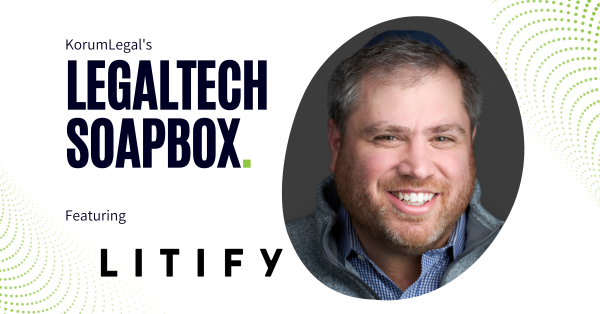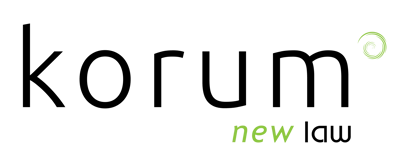LegalTech Soapbox: Empower your daily operations with Litify.

Dov Slansky is the VP of Strategy & Innovation at Litify where he works closely with offices of the General Counsel, Chief Legal Officers, and Legal Operations professionals heading up Litify’s ongoing business strategies and solutions for in-house legal departments. Dov is an accomplished Attorney and legal operations expert, often speaking about best practices for technology and innovation. Personally, Dov lives in New York together with his wife Miri and their four children. He’s also an avid cyclist and passionate DIYer in his spare time.
1. Hi Dov, Tell us the story behind Litify
I began my career at several mass tort law firms where I oversaw some of the largest dockets of drug and device caseloads. Afterward, I led a technology and operations team at one of the largest personal injury law firms in the United States.
In 2016, Litify was founded by lawyers who saw a better way for legal professionals to run their businesses and departments. Modern technology companies struggled to serve such a diverse industry, and outdated, on-premise systems were the status quo. We built Litify as a flexible, open, and cloud-based solution to help law firms and legal departments of all sizes centralise their operations.
Today, we have a client base of 350+ enterprise customers and 45,000+ legal professionals across the globe.
2. What are the services or products that Litify provides?
Litify ELM is an end-to-end enterprise legal management platform designed to break down silos between the legal team, outside counsel, and the rest of the business. Built on an open and flexible platform, Litify can be configured to match a team’s unique workflows and priorities. The Litify ELM offers a full suite of legal management features, including matter management, eBilling and outside counsel collaboration, intake workflows, document management, analytics, and more. It also seamlessly integrates with hundreds of other tools used and favored by legal professionals, giving clients a consolidated platform to manage legal operations in one place.
3. How does the above optimise the daily operations of an in-house legal team/ law firm?
Beyond providing one centralised place to manage legal work and a configurable platform that can be adapted to each legal team’s unique workflows and processes, the Litify ELM platform optimises daily operations in a few key ways:
- Increased productivity: with standardised matter processes and automated workflows, such as document generation, legal teams can close files with less friction and perform at peak efficiency.
- Reduced costs: with automatic invoice checks that uncover errors in billing and collaboration with outside counsel in the eBilling hub, legal teams can better manage spend.
- Improved reporting and analytics: with real-time data and dashboards, legal teams can measure results of in-house and outside counsel side-by-side in context to drive better performance over time.
- Better connection to the business: with legal service request workflows, the legal department can seamlessly interact with other internal stakeholders.
After making the switch to Litify, our clients note much richer and more comprehensive functionality — and have reported upward of millions of dollars in annual efficiency gains and cost savings.
4. What do you believe will be the most significant change in how in-house legal teams use technology in the next 10 years?
I believe that using platform-based technologies will continue to be a key to growth and efficiency for legal teams. It may be the 21st century, but even the most technologically advanced teams still rely on fragmented — disconnected — point systems to manage their legal work. Though they may streamline a single process, these systems are often difficult to integrate, potentially making the rest of the legal process inefficient.
This shift becomes further important in the face of artificial intelligence, specifically generative AI, which has been driving many of the headlines this year. For AI to be most effective, it needs to be embedded into the entire workflow. If you’re working from fragmented systems, you’re giving AI incomplete information to analyse and cutting automation off where it could help to make the entire department more efficient.
Lily Evans and Litify
Nov 26, 2023
Related Posts.
By: Natasha Norton
How eDiscovery Tools Transformed the Industry
The legal industry, like many others, has undergone a significant transformation in recent years thanks to the advent of technology. One area where this transformation has been particularly..
By: Lily Evans and Daniel van Binsbergen
LegalTech Soapbox: Empower your daily operations with Lexoo
Daniel van Binsbergen is the CEO of Lexoo. Daniel quit his stable law firm job in 2014 as he wanted to see if he could build a business doing law differently. During his days of working in law firms..
